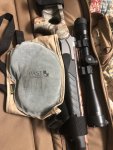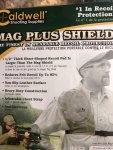I recently picked up a Savage 110 chambered for 300 Winchester Magnum. I took it to the range at 100 yards to get a general zero and my group sizes are like 6" in diameter (this is after 100 rounds through the barrel). I sometimes catch myself flinching before I take the shot. I automatically assume I'm the problem with the system. What is a good way to get comfortable with the recoil and concussion of these magnum rifles? I sadly cant own a suppressor because I live in New Jersey.
Rifle Specs:
Savage 110 Tactical 300WM (Accu-stock Accu-Trigger)
SWFA SS 10x42 (MOA/MOA)
Vortex Low Height 30mm Rings
20MOA base (came with the rifle)
Ammo Used:
120 rds Remington Core-Lokt 150g SP (the only stuff I can find in my area at the time)
Rifle Specs:
Savage 110 Tactical 300WM (Accu-stock Accu-Trigger)
SWFA SS 10x42 (MOA/MOA)
Vortex Low Height 30mm Rings
20MOA base (came with the rifle)
Ammo Used:
120 rds Remington Core-Lokt 150g SP (the only stuff I can find in my area at the time)




